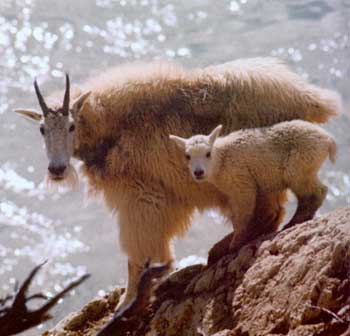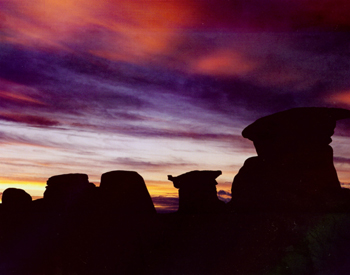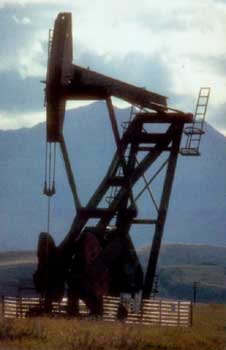|
In
1905, Alberta and its neighbour Saskatchewan, entered Confederation.
For the first time, the
Canadian provinces were
joined from sea to sea.
Settlements boomed in Alberta.
Land in the new province
was readily available at
low cost under the Homestead
Act, or could be purchased
from railway and other land
companies. The discovery
of new strains of wheat
and other grains suited
to western Canadian growing
conditions and new methods
of farming also helped encourage
rapid settlement.

This
baby goat was probably born
under a ledge high up in
the Rocky Mountains of Alberta.
The mother chose the ledge
for protection from the
golden eagles that regularly
patrol the ridges looking
for strays.
In
ten years, the population
increased over five times
to 374,000. Subsequently,
it increased substantially
to more than 584,000 in
1921. As a result, the population
of Alberta came to be made
up of many people of different
backgrounds, languages and
cultures. Alberta’s destiny
was changed forever in 1947,
when a major oil discovery
was made at Leduc, near
Edmonton. As more and more
oil and gas discoveries
were made, a share of the
oil money flowed to the
provincial government.

The
Alberta Badlands are a striking
panorama of fluted gullies,
the naturally sculpted pillars
of rock and gravel known
as hoodoos, and steep bluffs
which were, between 64 and
140 million years ago, a
sub-tropical lowland inhabited
by dinosaurs.
Jobs
were created in the petrochemical
industry, as well as in
construction, surveying
and transportation. Edmonton
and Calgary emerged as prosperous
cities of business and finance,
surpassing their rural neighbors.

Oil
rig backed by mountains.
Previous
Page
Next
Page
|
